In Update 7.2, Star Wars: The Old Republic introduced a new map system, to make it easier for player to find their way around the planets and get to their quests markers without getting lost. This guide will go over all the options available, tips on using the map, and how to revert it to the older style of map.
Contents
How to Use the Map
There are many different types of maps in SWTOR.
Minimap
If you are using the default layout, your mini-map will be located on the bottom right of the screen. This tiny map gives you a quick glimpse of where you are, and any enemies that you are fighting nearby.

Overlay
The Map overlay is a semi-transparent map that shows the entire area around you, and is really useful for figuring out where you need to go next.

When you press M on your keyboard click the button that looks like an expanding symbol on the bottom right of the screen, you’ll open the Map Overlay, sometimes known as the “popout map”. It will hide the minimap until you close it by pressing M again.
![]()
World Map
The World Map, sometimes known as the “big map”, is useful if you need a really large map that isn’t transparent, if you need to use the built-in magnifier, if you want to change instances, or if you want to view the entire planet’s map overview.

If you would like a full-size map, you can press ALT+M on your keyboard or click the circle-shaped icon of a “World” on the bottom right of your screen.
![]()
Galaxy Map
The Galaxy Map allows you to easily fly to planets with your ship, without having to walk back to it. You can click the different section of the galaxy map to zoom into them, or use your mouse wheel to zoom in. Click and drag with your left mouse to pan around the map.

To open the Galaxy Map, you can press SHIFT+M, or open the World Map, then press the “Galaxy Map” button on the left.

Fog of War
The gray parts of the map are parts you have not explored yet, and are called the “Fog of War”. You can see the general shape of the land, and roads and paths, but won’t be able to see icons like vendors until you have travelled to that area.

How to Find Your Way
The small triangle is your character on the map, and the way the arrow is pointing is the direction you are facing. You can easily see this by pressing the right and left keys on your keyboard (not WASD) which will spin you around, also spinning your icon on the map. If you struggle with directions, you can locate your next quest on the map by looking for the quest triangle or quest spinning circle icon, then spin your character until the triangle is facing the direction you need to go. Your character will be facing that direction and you can start running that way.
![]()
How to Go Back to the Old Map
If you miss the old map and would prefer it to look and work how it did before, you can change some settings in-game to revert it.
Old Minimap
To revert the minimap to its old style with all the buttons around it, press ESC on your keyboard, choose Interface Editor, and click your minimap on the bottom right. In the Mini-Map settings in the center of the screen, scroll down, and change the dropdown that says “Map Style” from “Minimal” to “Maximal”.
Old Big Map
If you do not like the popout map showing up when you press M on your keyboard, you can set it to open the big map instead. Press ESC on your keyboard, choose Preferences, and click the Key Bindings tab at the bottom. Once you are in the key bindings section, click INTERFACE on the left, and scroll about halfway down until you see “Toggle World Map Pane”. You will click the button to the left that says “ALT + M” once, and then press “M” on your keyboard. Then press “Ok” on the bottom right. Now when you press M on your keyboard, the old map will open up instead of the popout map.

To open the popout map, you can either re-keybind Map Overlay to a different key (like ALT + M) or just press the expanding button on the bottom right if your screen.
If you want to save these keybindings and load them on other characters, you can use the Keybinding Import/Export tab at the bottom of the window.
Map Settings
There are a lot of settings for all three types of maps that you can adjust to make it easier for you to read the map. You can make it bigger, move it around, rotate it differently, and turn icons on and off.
If you are not already using a shared saved interface for all of your characters, you may want to start, so you don’t have to re-do these changes for each of your characters. To create a User Interface you can use across all your characters, press ESC on your keyboard, and choose Interface Editor. Next, choose a name for your saved user interface, for example, “MY INTERFACE”, and type it in the long empty box under the dropdown. Then press the icon of a floppy disk on the right to save your user interface. When you make changes to your User Interface, make sure to press “Save” at the bottom of the window to save them.
Now, on your other characters, you can press ESC on your keyboard, and choose Interface Editor again, and you’ll be able to select your saved interface on your other characters! Any changes you make will be across the board for all characters using that interface, which can save you a lot of time and effort.
Minimap Settings
Move
To move the minimap, click it once with the Interface Editor, then click and drag it around to move it.
Scale (Size)
You can make the minimap bigger by sliding the scale slider. The default is 1.15 and you can make it up to 2.0. To make it even bigger, adjust the Global Scale of your interface.
Alpha
If you want the minimap to be slightly transparent, slide down the Alpha slider. The default is 100% and you can slide it down to 0% where it is barely visible.
Enabled
To turn the minimap off entirely, uncheck “Enabled”. Note that the minimap is hidden automatically when the popout/overlay map is open.
Flip Vertically
This doesn’t flip the minimap, but instead puts the map name at the bottom of the minimap. You’ll have to move the minimap slightly up so you can see the name if you use this setting.
Map Style
“Minimal” is the default of just a circle with the map in it. “Maximal” is the way the map used to look, with extra icons around the sides.
Icon Scale
The icon scale adjusts how big the icons on the map are. The default is 0.8 and the largest is 2.0. This is most useful if you are also bumping up the Scale of the minimap.
Icons
You can adjust which icons show up on the minimap, by clicking the Map Filters icon on the bottom right of your screen, it looks like a funnel or an upside-down triangle. You can then use the checkboxes to hide or show things like Vendors, Taxes or Mailboxes. These filters are shared with the popout/overlay map, but not with the big world map.
Zoom In / Zoom Out
To zoom in and out on the minimap, use the small plus and minus symbols on the bottom right of your screen.
Overlay Map Settings
Keybind to Open
Default is M on your keyboard, but you can change it in ESC -> Preferences -> Key Bindings tab at the bottom -> Interface.
M
Keybind to Close
Default is M on your keyboard, but you can change it in the Preferences. (It’s the same key to open/close.)
M
Interface Editor
The following settings are in the Interface Editor. Press ESC on your keyboard, choose Interface Editor, and click your overlay on the top right to select it. The settings are located in the box in the center of the screen.
Scale (Size)
You can make the overlay map bigger by sliding the scale slider. The default is 0.5 and you can make it up to 2.0 which takes up half the screen. To make it even bigger, adjust the Global Scale of your interface, though it may be cut off. Setting in the Interface Editor.
Enabled
The popout map has an “Enabled” checkbox, but it’s kind of useless, because pressing the M key on your keyboard turns it on and off. Setting in the Interface Editor.
Map Internal Zoom
The internal zoom makes the map bigger within its borders. At a glance, this just makes the map bigger, but if you combine it with the Map Type “Fixed” it will allow you to show just some of the map at a time, zoomed in, and the map will move with you as you move so you can see more of it as you move around. The default is 1 and it goes up to 4. Setting in the Interface Editor.
Icon Scale
The icon scale adjusts how big the icons on the map are. The default is 1.75 and the largest is 4. Setting in the Interface Editor.
Label Scale
Makes the written labels on maps that have them bigger, The default is 2 and the largest is 4. Setting in the Interface Editor.
Icon Alpha
If you want just the icons to be more transparent, you can slide down the alpha slider. The default is 100% and you can slide it down to 0% where it is barely visible. Setting in the Interface Editor.
Map Alpha
If you want just the map lines to be more transparent or less, you can slide down the alpha slider. The default is 60% and you can slide it down to 0% where it is barely visible, or slide it up to 100% so it is not transparent at all. Setting in the Interface Editor.
Map Contrast
The default is 50% and you can slide it down to 0% which makes it very white-ish, or slide it up to 100% which makes it very dark-ish. This may help you see the lines better. Setting in the Interface Editor.
Map Type
Fixed/Scroll. The default is “Fixed”, where the map stays still, and the whole map is shown at once. “Scroll” cause the map to move with you a you move. It is useful if you have bumped up the Map Internal Zoom so that the map is bigger than the screen’s borders, the map will move with you a you move. Setting in the Interface Editor.
Change to Local Map when in motion checkbox
This will cause the overlay map not to change when you walk to a different area until you open and close the map again. I do not recommend turning this off unless you find the flashing of the map changing to be a problem or find it distracting. Defaults to enabled. Setting in the Interface Editor.
Ping character when in motion checkbox
This causes yellow circles to radiate from your “triangle” icon showing your character on the overlay map, making them easier to see. I do not recommend turning this off unless you find the flashing circles to be a problem or find it distracting. Defaults to enabled. Setting in the Interface Editor.
Icons
You can adjust which icons show up on the overlay map, by clicking the Map Filters icon on the bottom right of your screen, it looks like a funnel or an upside-down triangle. You can then use the checkboxes to hide or show things like Vendors, Taxes or Mailboxes. These filters are shared with the minimap, but not with the big world map. Setting in the Interface Editor.
World Map Settings
The World Map is not part of the User Interface, so there are less settings available for it. Once you have it open, most of the settings it has available are on the Overlay Map itself, not in the settings.
Keybind to Open
Default is ALT + M on your keyboard, but you can change it in ESC -> Preferences -> Key Bindings tab at the bottom -> Interface.
ALT + M
Keybind to Close
ESC on your keyboard, like most windows in-game. Not adjustable.
ESC
Move
To move the World Map, you will need to have the ability to move secondary windows turned on. To do so, press ESC on your keyboard, choose Interface Editor, and then make sure “Enable Movable Secondary Window” is checked. This will allow you to move many windows in the game like your inventory or the Overlay Map, by left-clicking and holding your mouse and dragging the “top bar” of the window, where it’s title is.
Scale (Size)
There is no specific scale slider for the World Map. You can adjust the Global Scale of all your interface in ESC -> Interface Editor though to make everything bigger.
Magnify Cursor
When this checkbox is enabled, it adds a little magnifying glass as you look around the World Map. *** BUG: I noticed in the new map, the magnifier makes the lines and roads of the map bigger, but not the icons/text.
Exploration Missions
When this checkbox is enabled, hidden explorational quests are revealed. The default is disabled, so players are now overwhelmed by too many quests.
Icons
You can adjust which icons show up on the World Map, by clicking the Map Filters button on the left. You can then use the checkboxes to hide or show things like Vendors, Taxes or Mailboxes. These filters are not shared with the popout/overlay map, they are independent.
Galaxy Map
Just a button that opens the map your flying on your ship.
Instances
You may sometimes see a dropdown under “Galaxy Map” that has the name of your planet, plus some numbers beside it, like “Korriban (1)” or “Tython (2)”. This is your instance. Instances allow many players to play on a map at once, without over-crowding. you can not see players who are on other instances, even if they are standing in the exact same spot as you. You can switch instances if things are too crowded, or if you are trying to play with a friend or join a group, by using this dropdown. “PvP” instances are instances where other players can attack you and you can attack them while playing.
PVE/PVP
You can see what type of instance you are in currently by looking at the bottom right of your screen. there will be a big PVE or PVP acronym on your Utility Bar. PVE is the normal instance type, and PVP means other players can attack you. To change this, open your World Map and change instances with the dropdown. On planets that allow PvP, clicking “PVE” and choosing “Toggle PvP Focus” will create a PvP instance if there isn’t one already, and transport you to the PvP instance. You can also switch back to PVE this way, though there is a timer of a few minutes before you can switch back.
View other maps on planet
You can move around between different maps by clicking the “doorway icons” on the World Map. This does not work on the overlay map or minimap, only the World Map.
![]()
View entire Planet’s Map
You can see the true “world map” by clicking the smaller square map on the bottom left to switch to it, and click it again to switch back to the area map.
Coordinates
The coordinates are supposed to show you where your cursor is on the map as you move it around, and where your character is on the map, in the form of an X,Y coordinate. This is helpful when looking for rare creatures, hidden lore objects, or specific locations in guides or from advice from other players. *** BUG: Unfortunately the coordinates have always been a little funky, and with the new map update, seem to be especially off.
Map Fades While Moving
There are a few Preferences for the map which you can get to by ESC -> Preferences -> USER INTERFACE on the left -> scroll down a bit to the Map section, though most of these are defunct now. By default, the World Map will fade out as you run, so you can see where you are going. To disable this, uncheck “Map Fades While Moving” in the preferences. You can also adjust how much the map fades with the “Map Fade Value” slider to make it more or less transparent.
Map Flashes Red While Being Attacked
Found in ESC -> Preferences -> USER INTERFACE on the left -> scroll down a bit to the Map section, enabled by default. I do not recommend turning this off unless you find the flashing red of the map to be a problem or find it distracting.
Galaxy Map
The World Map is not part of the User Interface, so there are no real settings available for it.
Keybind to Open
Default is SHIFT + M on your keyboard, but you can change it in ESC -> Preferences -> Key Bindings tab at the bottom -> Interface.
SHIFT+M
Keybind to Close
ESC on your keyboard, like most windows in-game. Not adjustable.
ESC
By default, the Galaxy Map is not on the Utility Bar on the bottom right. To add it, press ESC -> Preferences -> USER INTERFACE on the left -> then click the “Utility Bar 2” on the bottom right to select it. If you scroll down in the center box settings, there’s a ton of slots you can customize. You can change one of the “Divider”s to “Galaxy Map” and save!
Legally Blind, Visually Impaired or Low Vision Map
In update 7.2 in 2022, the map received some great improvements and is very adjustable. When you press M, or the small “expanding” icon on the bottom right, the overlay map will open, a semi-transparent map that allows you to see both the terrain around you and the map itself.
By default, the overlay map is quite small. But, the overlay map is very adjustable. and has a lot of independent controls you can adjust to make it very visible!
To adjust the overlay settings, press ESC on your keyboard, choose Interface Editor, and click your overlay on the top right to select it. The settings are located in the small box in the center of the screen.
From there, you will want to adjust the following settings – you will need to adjust them based on your current Global Scale, screen size, and how big you actually want the map to be.
- Scale (Size): You can make the overlay map bigger by sliding the scale slider. The default is 0.5 and you can make it up to 2.0 which takes up half the screen. To make it even bigger, adjust the Global Scale of your interface, though it may be cut off.
- Map Internal Zoom + Map Type: The internal zoom makes the map bigger within its borders. At a glance, this just makes the map bigger, but if you combine it with the Map Type “Fixed” it will allow you to show just some of the map at a time, zoomed in, and the map will move with you as you move so you can see more of it as you move around. The default is 1 and it goes up to 4. “Scroll” cause the map to move with you a you move. It is useful if you have bumped up the Map Internal Zoom so that the map is bigger than the screen’s borders, the map will move with you a you move.
- Icon Scale: The icon scale adjusts how big the icons on the map are. The default is 1.75 and the largest is 4. I went with 2.75.
- Label Scale: Makes the written labels on maps that have them bigger, The default is 2 and the largest is 4.
- Map Alpha: If you want just the map lines to be more transparent or less, you can slide down the alpha slider. The default is 60% and you can slide it up to 100% so it is not transparent at all.
- Map Contrast: The default is 50% and you can slide it up to 100%. This may help you see the lines better. I set mine to 80%.
If you just need a view of the whole map, press ALT+M on your keyboard, or click the icon of a planet on the bottom right, to open the World Map.
![]()
If the Map still isn’t big enough for you to read, the Windows Magnifier tool is helpful for a closer inspection.
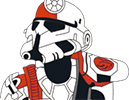





































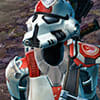 Questions or comments? Feel free to send me a message on Twitter
Questions or comments? Feel free to send me a message on Twitter 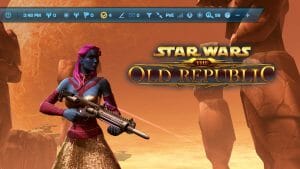 Utility Bar Guide
Utility Bar Guide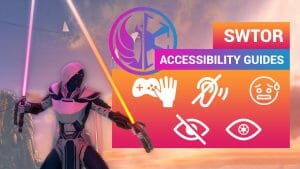 Accessibility
Accessibility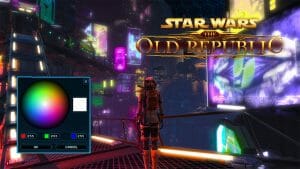 Colorblind Mode
Colorblind Mode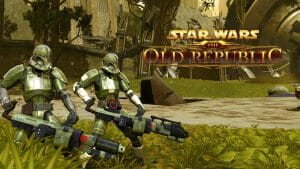 Gaming with Anxiety
Gaming with Anxiety Deaf and Hard of Hearing Gaming
Deaf and Hard of Hearing Gaming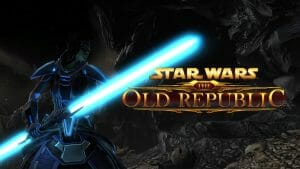 Legally Blind, Visually Impaired or Low Vision Gaming
Legally Blind, Visually Impaired or Low Vision Gaming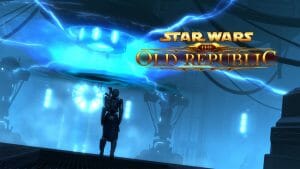 One-Handed Gaming
One-Handed Gaming

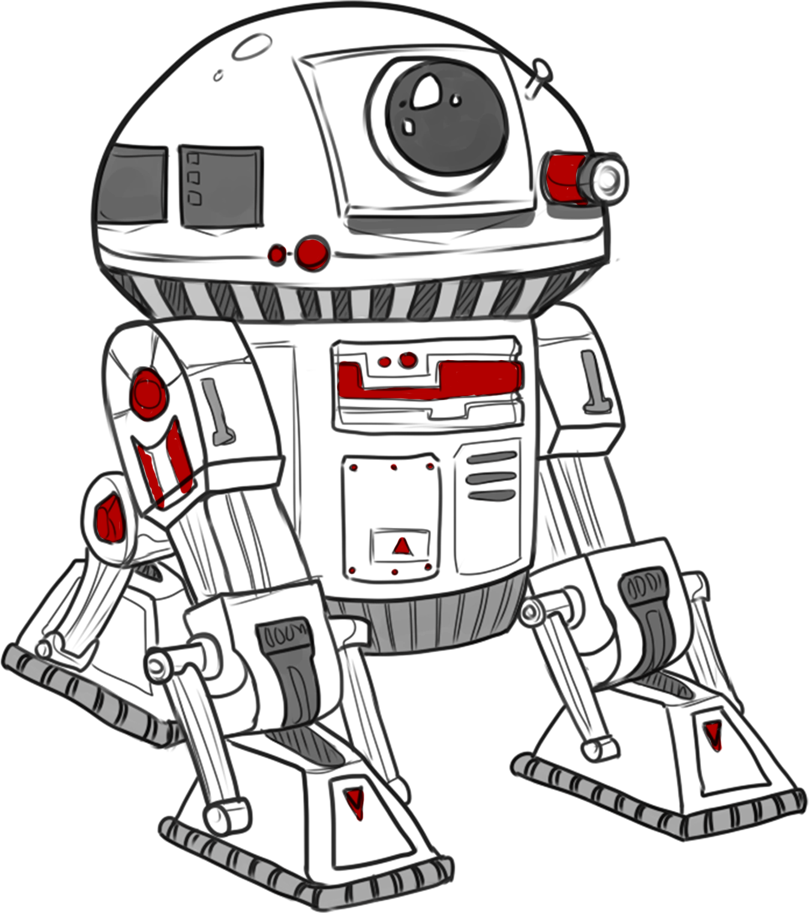
 Twitter @swtorista
Twitter @swtorista Reddit /u/swtorista
Reddit /u/swtorista Discord Swtorista#0153
Discord Swtorista#0153 Email swtorista@gmail.com
Email swtorista@gmail.com Youtube Swtorista
Youtube Swtorista Twitch Swtorista
Twitch Swtorista Patreon
Patreon